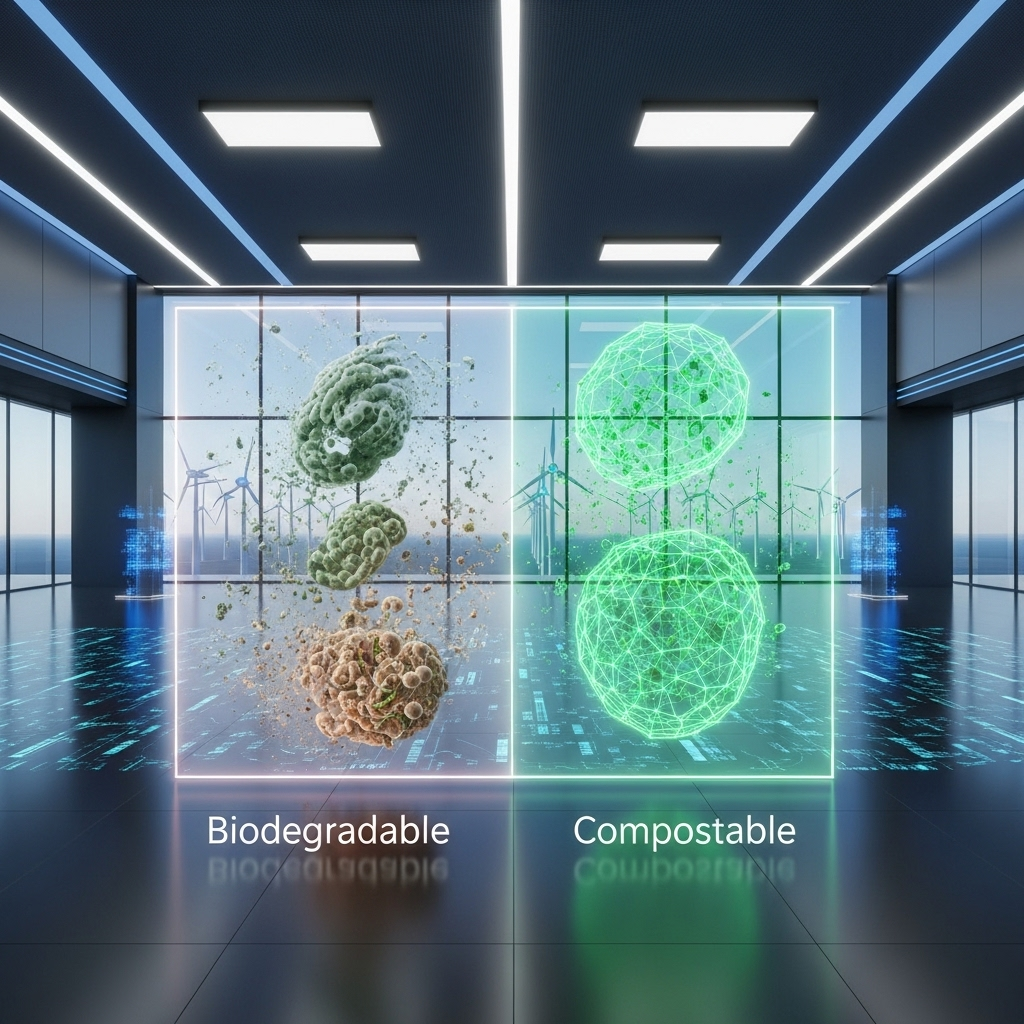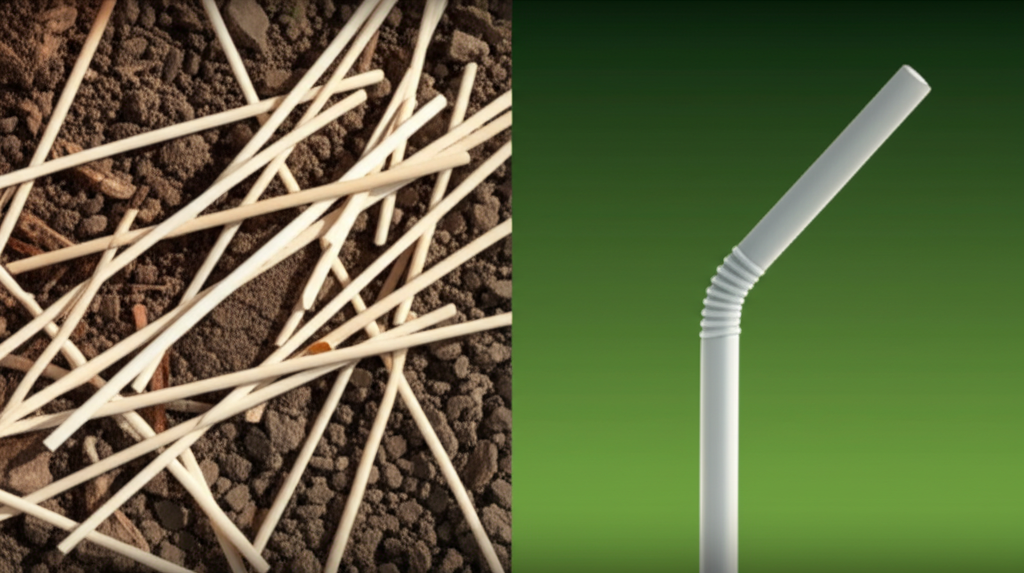
The procurement and operations landscape is rapidly evolving, driven by an undeniable shift towards sustainability. For supply chain executives, operations directors, and procurement managers, navigating the world of eco-friendly products, particularly in high-volume consumables like straws, presents a high-stakes challenge. The pressure from consumers and stakeholders for genuinely sustainable business practices is intensifying, with over 70% of consumers now favoring brands committed to environmental responsibility. Ignoring this demand isn’t just a missed opportunity for market advantage; it’s a direct threat to brand reputation and commercial viability. The operational or commercial impact of selecting inappropriate or mislabeled products can be severe, leading to customer backlash, regulatory fines, and damaged brand integrity, a phenomenon often termed “greenwashing.” The EU’s Single-Use Plastics Directive (SUPD), for instance, has already banned many disposable plastic items, even those marketed as “biobased,” underscoring the increasing scrutiny from regulatory bodies and environmental watchdogs. Businesses that fail to grasp the nuanced differences in eco-friendly claims risk not only legal repercussions but also eroding the very trust they strive to build with their customers.

The Evolution of Sustainable Sipping: From Ancient Reeds to Modern Bioplastics
The journey of the drinking straw reflects a broader societal narrative about consumption and environmental impact. Tracing back over 5,000 years to ancient Sumerian practices of using hollow reeds for beer, the modern era truly began in 1888 with American inventor Marvin C. Stone’s patented paper straw. This innovation dominated early 20th-century soda shops, offering a taste-neutral alternative to natural rye grass. However, the mid-20th century saw the ubiquitous rise of plastic straws—cheap, durable, and seemingly convenient—effectively pushing paper alternatives into near extinction by the 1970s. This plastic interlude, while convenient, laid the groundwork for a global environmental crisis.
The 21st century brought a stark awakening to the devastating consequences of single-use plastics, particularly their contribution to ocean pollution and harm to marine life. A viral 2015 video, showing a plastic straw being removed from a sea turtle’s nostril, galvanized public opinion and accelerated environmental movements. This surge in awareness led to a rapid succession of plastic straw bans and restrictions across the globe. Seattle’s pioneering ban in 2018, California’s “straw upon request” policy in 2019, and England’s comprehensive ban on single-use plastic straws in 2020 exemplify this regulatory shift. Major corporations like Starbucks and McDonald’s have also responded, committing to phasing out plastic straws globally and launching compostable straw programs. This urgent need for alternatives has reignited innovation, bringing us back to plant-based solutions but with a critical distinction: understanding the terminological minefield. The terms “biodegradable” and “compostable” are often used interchangeably, yet their differences are profound and crucial for making genuinely sustainable procurement decisions.

Deconstructing “Eco-Friendly”: A B2B Deep Dive into Straw Technologies
For procurement professionals, understanding the true capabilities and limitations of “eco-friendly” straws is paramount. The distinction between biodegradable and compostable isn’t just semantic; it dictates environmental impact, compliance, and ultimately, brand credibility.
Understanding Biodegradable Straws: Promises and Practicalities
Biodegradable straws are designed to break down naturally into smaller components when exposed to specific environmental conditions like heat, moisture, and microorganisms. Materials commonly include cornstarch, wheat, bamboo, bagasse (sugarcane fiber), or other plant fibers like grass, rice, coffee, and bulrush. While many biodegradable straws are made from bioplastics like Polylactic Acid (PLA), their claim of “breaking down naturally” can be misleading. In uncontrolled environments, such as landfills or open natural settings, many biodegradable options can take months to years to fully decompose, performing similarly to traditional plastics.
The hidden complexities of biodegradable straws lie in their unpredictable lifecycles and potential for incomplete degradation. Concerns persist about them leaving behind microplastic residues or leaching chemicals into soil and marine environments. Moreover, biodegradable straws generally lack universal certification. This absence means businesses often rely solely on manufacturer claims, which can be inconsistent or unsubstantiated, posing a significant risk for procurement managers aiming for verifiable sustainability. For a deeper dive into these materials, their manufacturing, and disposal, explore our comprehensive guide onbiodegradable straw materials, manufacturing, and disposal.

Exploring Compostable Straws: Achieving True Circularity
Compostable straws represent a more rigorous standard for environmental degradation. These straws are specifically designed to decompose completely into organic matter—such as water, carbon dioxide, and biomass—within a short, defined period (typically weeks to three months) in a controlled composting environment. This process transforms them into nutrient-rich organic matter, known as compost.
Key materials include PLA, PHA (Polyhydroxyalkanoate, derived from plant-based oils), sugarcane bagasse, and advanced paper innovations. The crucial differentiator is the requirement for specific, controlled conditions found in industrial composting facilities, which maintain higher temperatures and controlled environments for effective breakdown. While most require industrial facilities, some compostable straws are certified for home composting, demonstrating their ability to decompose swiftly in backyard bins.
For businesses, certification is the gold standard for environmental impact. Compostable straws are often certified to meet stringent environmental standards such such as ASTM D6400 and EN 13432, and certified by organizations like the Biodegradable Products Institute (BPI), CMA, or TÜV Austria. These certifications guarantee complete breakdown, absence of harmful residues, and no microplastic formation, ensuring that the resulting compost can be used as a valuable fertilizer. This commitment to a circular economy makes certified compostable options a clear winner for businesses aiming for verifiable sustainability.

Strategic Procurement: A Comparative Analysis for Business Leaders
Making an informed decision requires a clear understanding of the trade-offs. The following matrix offers a side-by-side comparison to aid your sustainable procurement strategy:
| Criteria | Biodegradable Straws | Compostable Straws |
|---|---|---|
| Decomposition Environment & Time | “Natural environments,” often slow (6+ months, potentially years) | Specific controlled composting (industrial or certified home), faster (weeks to 3 months) |
| Certification & Standards | Generally lack universal certification (e.g., ASTM D5988, D6954 often less stringent) | Certified to rigorous standards (e.g., BPI Certified Compostable, TÜV Austria OK Compost, EN 13432) |
| Material Sourcing & Composition | Plant fibers (cornstarch, wheat, bamboo, grass, bagasse, PLA) | Plant-based bioplastics (PLA, PHA), sugarcane bagasse, paper, rice, tapioca |
| Post-Decomposition Residue & Soil Impact | May leave microplastics or leach chemicals; does not enrich soil | Decomposes completely into CO2, H2O, and biomass; enriches soil; no harmful residues |
| Durability & User Experience | Varies widely; some paper options prone to sogginess | Engineered for durability mimicking plastic; some paper options still have issues, but improving (e.g., PHA, sugarcane) |
| Cost Implications | Generally higher than traditional plastic; can vary | Typically higher than traditional plastic; reflects manufacturing and certification costs |
| Waste Management Infrastructure Requirements | Often end up in landfills without specific degradation pathways | Requires access to industrial or certified home composting facilities for proper disposal |
| Regulatory Compliance & Market Acceptance | Less clearly defined, higher risk of “greenwashing” claims | Aligns with bans on single-use plastics; recognized by certifications for compliance |
For a comprehensive B2B guide on the differences, refer to our detailed articleCompostable vs. Biodegradable Straws: A B2B Guide.
Industry Insights: Driving Forces, Innovations, and Future Trends
The eco-friendly straw market is experiencing robust growth, propelled by a global push for sustainability and evolving regulations. The global eco-friendly straws market, encompassing both biodegradable and compostable options, is projected to reach nearly USD 25.1 billion by 2035, growing at a Compound Annual Growth Rate (CAGR) of 7.3% from an estimated USD 12.3 billion in 2025. Specifically, the compostable straws market is expected to grow from USD 1.9 billion in 2025 to USD 3.8 billion by 2035, with a CAGR of 7.1%. The foodservice segment is projected to dominate, accounting for a 52.8% share by 2025, as restaurants, QSRs, hotels, and cafes increasingly adopt sustainable options to meet consumer demand and comply with environmental mandates.
Pioneering Materials & Performance Enhancements:
Innovation is rapidly expanding beyond traditional paper and PLA. Advanced bioplastics like PHA are gaining traction due to their high biodegradability across various environments, including marine settings, while offering a look, feel, and performance comparable to traditional plastic with superior temperature resistance. One notable example is the “Phade straw,” an early PHA product distributed by Wincup, praised for its durability. Further innovations include seaweed-based straws from companies like Loliware, designed to break down at the same rate as food waste, and straws made from rice, coffee grounds, coconut (as seen with Sunbird Straws converting agri-waste), and cellulose acetate. Paper straw durability is also improving through multi-layered coatings and materials like agar, designed to prevent premature sogginess.
Addressing the Controversies:
The industry is actively working to mitigate past controversies. Research has highlighted concerns about “forever chemicals” (PFAS) in some paper and bamboo straws, prompting manufacturers to innovate with PFAS-free coatings. The challenge with PLA, primarily its reliance on industrial composting facilities which are not universally available, is pushing for broader adoption of PHA and other marine-degradable materials. Effective certifications from bodies like BPI, DIN CERTCO, and TÜV Austria are crucial for consumers and businesses to differentiate truly compostable products from greenwashing claims, with criteria for home compostable straws typically requiring 90% biodegradation within one year and non-toxicity.
Future Trends (5-10 years):
Looking ahead, the industry will see continuous technological progress in biodegradable coatings, mass production techniques, and smart straw designs. AI-fueled material research and waste reduction analytics are anticipated to play a significant role in optimizing sustainable manufacturing processes. We can expect innovations such as edible straws becoming more mainstream, reusable “smart” straws with embedded filtration, and stable home-compostable options that perform reliably. Furthermore, the integration of blockchain technology could enhance supply chain transparency, allowing businesses to verify the origin and lifecycle claims of their eco-friendly straw suppliers. This dynamic environment emphasizes the need for flexible and informed procurement strategies. For more insights into how bioplastics are shaping the future of sustainable solutions, review our article onbiodegradable plastic straws and B2B sustainability.
Making an Informed Decision: Your Business’s Path to Sustainable Straw Solutions
Navigating the complexities of eco-friendly straws requires a strategic approach. Procurement managers, operations directors, and sustainability officers must ask critical questions to align their choices with brand values, regulatory obligations, and operational realities. First, assess your local waste management capabilities: Do you have access to industrial composting facilities, or do you require home compostable solutions? Second, scrutinize certifications. Which certifications (e.g., BPI, TÜV Austria) align with your brand’s commitment to verifiable sustainability and regulatory compliance, particularly given the varying nuances in US and European regulations? Third, consider the user experience: How do different materials impact drink quality and customer satisfaction? Finally, look beyond unit price to the total lifecycle cost, including disposal, reputational risk, and long-term environmental impact.
Integrating your straw choices into a broader sustainability strategy is key to holistic waste management and environmental stewardship. This might include exploring reusable alternatives for dine-in settings where appropriate. Partnering with transparent suppliers who offer verifiable certifications and robust sustainability claims is paramount. Seek out collaborators committed to end-of-life solutions and educational initiatives to ensure proper disposal. By prioritizing certified compostable solutions, your business can significantly mitigate environmental risks, align with global regulatory trends, and enhance brand value. Don’t let confusion around “biodegradable” vs. “compostable” delay your progress. Invest in the clarity and proven performance of certified compostable straws today to meet escalating consumer demand, ensure regulatory compliance, and position your brand as a leader in genuine environmental responsibility, unlocking significant market share opportunities and strengthening your brand’s long-term resilience.






